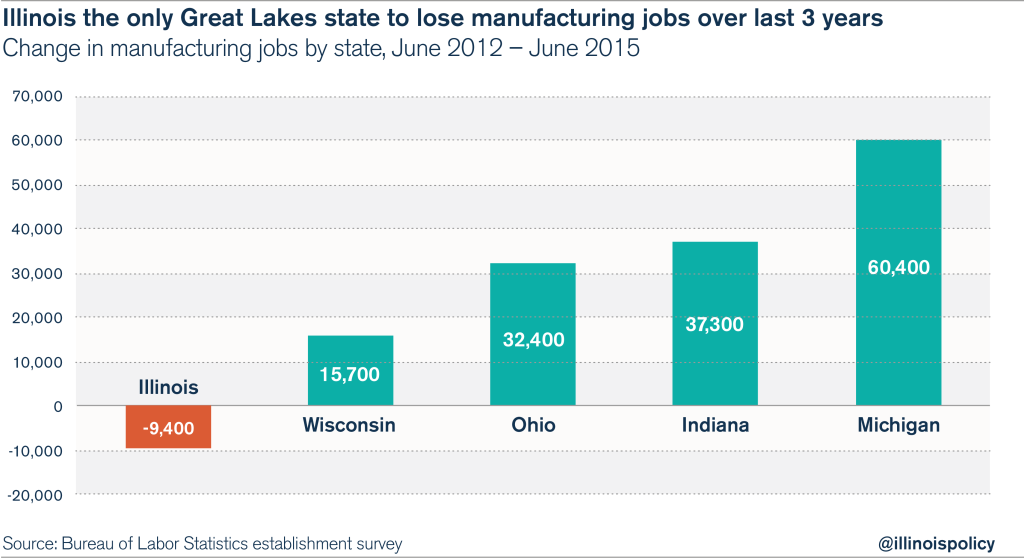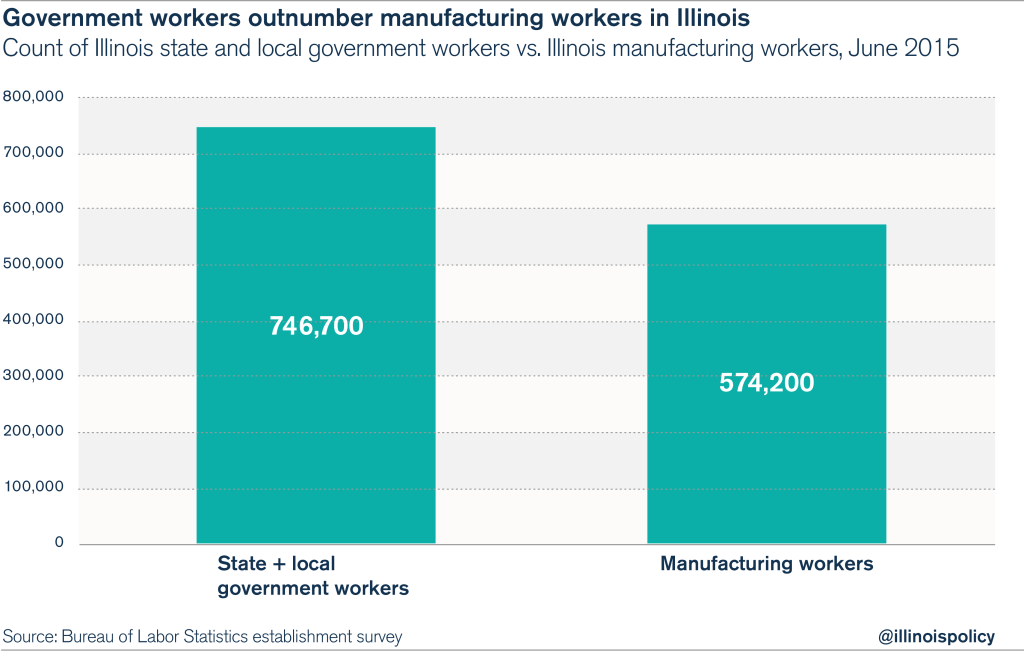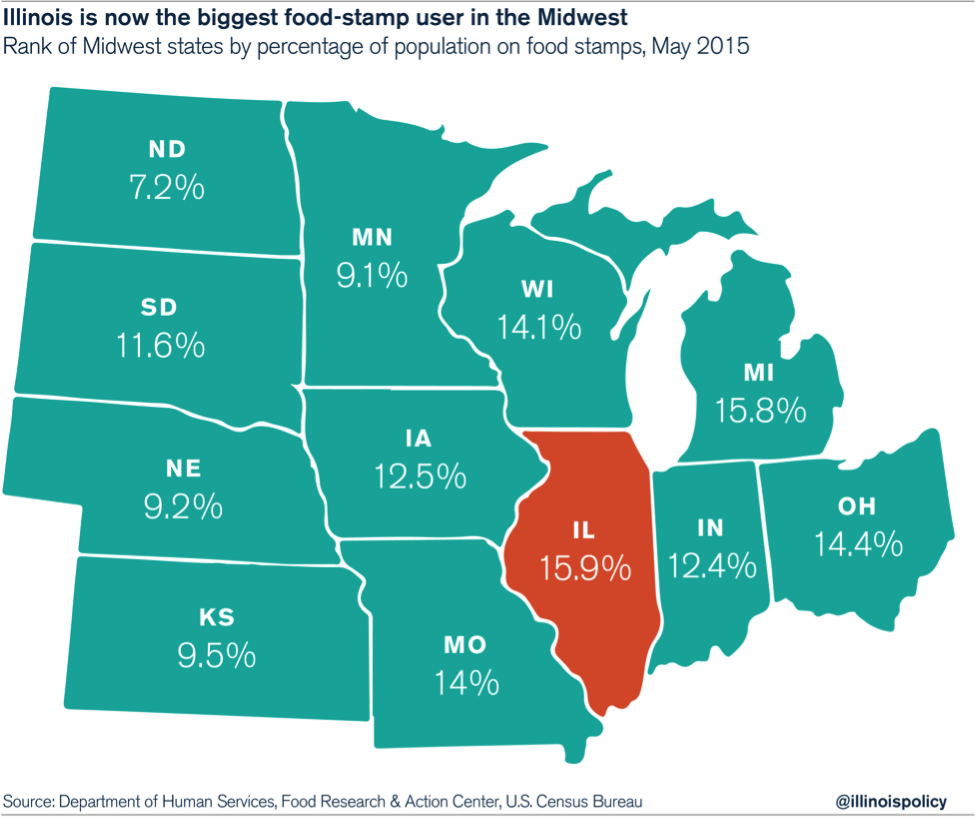Government workers outnumber manufacturing workers in Illinois
In the other Great Lakes states, workers are more likely to be able to find a manufacturing opportunity than a government job.
The top-producing states of the Midwest’s manufacturing powerhouse are Illinois, Indiana, Michigan, Ohio and Wisconsin. But Illinois is the only one of the Great Lakes states where government workers dramatically outnumber manufacturing workers, according to data from the Bureau of Labor Statistics.
As of June 2015, Illinois had only 574,000 factory workers, compared with nearly 750,000 state and local government workers. That means Illinois had only 3 manufacturing workers for every 4 state and local government workers.
Simply put, workers in Illinois are more likely to find a job in government than in manufacturing production. But in the other Great Lakes states, workers are more likely to be able to find a manufacturing opportunity than a government job. The ratio of manufacturing workers to government workers puts Illinois at 0.77 manufacturing workers per government worker, compared to 1.02 manufacturing workers per government worker in Ohio, 1.11 in Michigan, 1.23 in Wisconsin and 1.31 in Indiana.

For graphics on the history of manufacturing versus government employment in these states, click here.
The source of the problem is clear: Illinois is not keeping up in the creation of manufacturing jobs. Over the last three years, Illinois is down 9,400 manufacturing jobs while Wisconsin is up 15,700; Ohio is up 32,400; Indiana is up 37,300; and Michigan is up 60,400.

Production occupations are where the Midwest’s blue-collar middle class is created. But unfair tax and regulatory policies in Illinois, from the state’s broken workers’ compensation system to its skyrocketing property taxes, prevent those opportunities from being created in Illinois. As Illinois’ middle class suffers and shrinks, regional competitors continue along churning out thousands upon thousands of manufacturing opportunities, lifting up families to a brighter future.
It is not surprising, then, that Illinois recently became the Midwest’s biggest user of food stamps, surpassing Michigan. Illinois now has a higher portion of its population on food assistance than any state in the Midwest. Without employment growth in Illinois’ production economy, Illinois’ blue-collar workers are being driven into dependency.
The solution to this problem is to create policy fairness for the manufacturing sector and to move toward a choice-based educational system that can include high schools geared toward production occupations for students who don’t plan to immediately attend college. Manufacturers have gone on record saying reforms to address workers’ compensation and property taxes would help boost the production industries. But they also need skilled workers flowing into industry, and Illinois’ education system should move toward preparing students for these well-paying jobs.
Manufacturing is a critical part of Illinois’ industrial history, and should be a driving force for the state’s future. But policymakers are dragging their feet and letting opportunities wither on the vine. Illinois’ manufacturers deserve better, and so do the students and young adults who are looking to grab hold of an opportunity to be a producer in America’s industrial heartland.
The time for reform is ripe. It should be seized before Illinois suffers more manufacturing losses and wasted opportunities.


